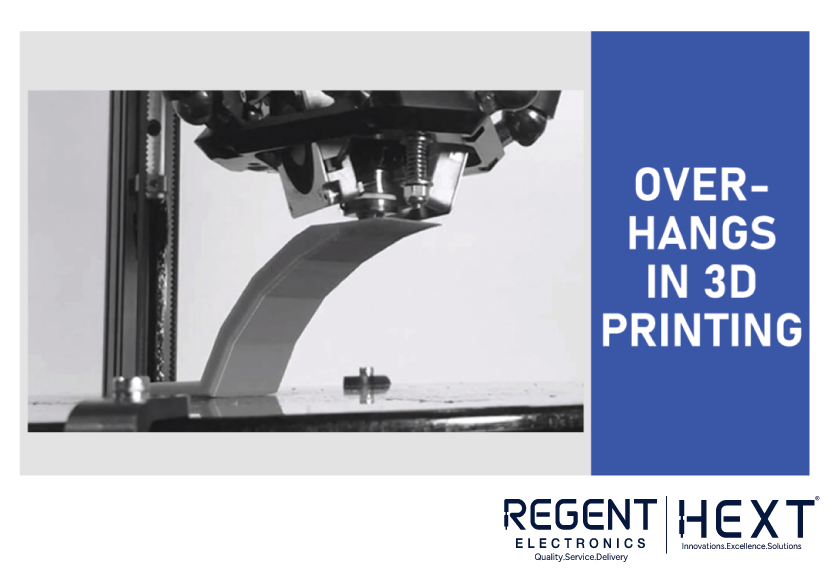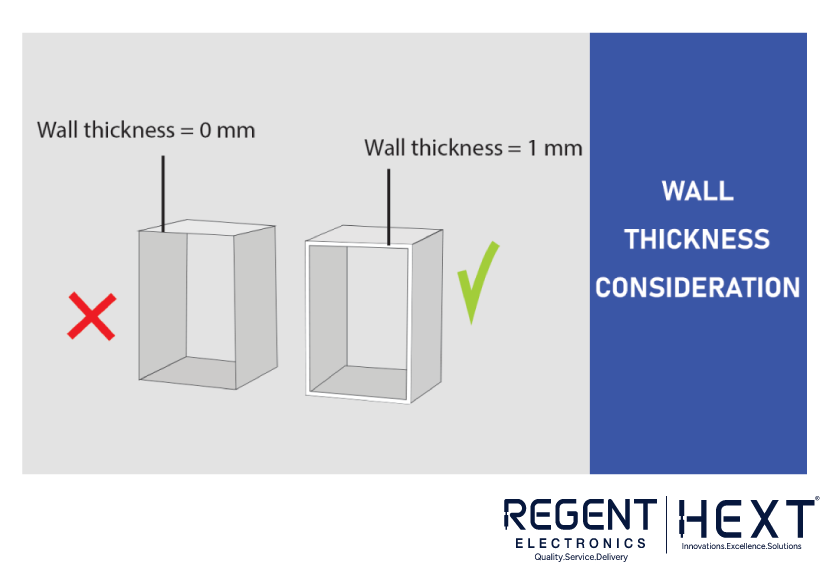
Essential Design Considerations for 3D Printing – A Complete Guide by Regent Electronics
3D printing is revolutionizing modern manufacturing by enabling the creation of complex, custom objects with precision and efficiency. However, to achieve high-quality prints, it’s crucial to follow certain design principles.
In this blog, Regent Electronics outlines the key design considerations for 3D printing to help you get the best results from your printer. Whether you’re a beginner or an experienced designer, this guide will help you avoid common pitfalls and ensure your 3D models are print-ready.
Why Are Design Guidelines Important for 3D Printing?

3D printing begins with a digital 3D model, typically created using CAD software. This model is then sliced into layers and printed one layer at a time. While software allows for the design of almost anything, not every design is physically printable. Ignoring design constraints may result in weak prints, deformations, or print failures.
To avoid such issues, it’s essential to consider the physical realities of 3D printing during the design phase.
Core Design Guidelines for 3D Printing
1. Managing Overhangs

An overhang occurs when a layer extends beyond the one below it. If the angle of the overhang exceeds a certain degree, the material may sag or collapse during printing.
Best Practices:
- Keep overhangs below 45° to minimize the need for support.
- Use support structures where necessary, though they increase material use and post-processing.
- Improve cooling with high-speed fans.
- Reduce layer height for better detail.
- Lower print speed for enhanced accuracy.
2. Wall Thickness

Wall thickness plays a crucial role in the strength and durability of your printed object.
Recommended:
- Minimum wall thickness: 0.8 mm for FDM and 0.4–0.6 mm for SLA or DMLS.
- Thin walls may detach or break during post-processing like cleaning or curing.
3. Avoiding Warping
Warping happens when the print cools unevenly, causing the base layers to shrink and lift off the print bed.
Prevention Tips:
- Use a heated print bed.
- Apply adhesives like glue or tape on the bed surface.
- Ensure proper bed leveling.
- Use brims or rafts to improve adhesion.
4. Detail Resolution
Adding fine details can improve aesthetics, but it’s important to know your printer’s limits.
Consider:
- Minimum feature size based on your nozzle and material.
- Small details can increase print time and cost.
- For features like logos or text, make sure the minimum height is >0.1 mm (for SLA).
Specific Considerations by 3D Printing Technology
✔️ FDM 3D Printing Design Tips
Fused Deposition Modeling (FDM) is cost-effective and widely used but comes with its own design constraints.
Key Considerations:

- Bridging: When material spans between two points, reduce the distance or use support.
- Increase fan speed for rapid cooling.
- Lower extrusion flow and temperature.
- Corners & Edges: Due to the round nozzle, sharp edges appear slightly rounded.
- Print slower to achieve better corner resolution.
- Overhangs: Keep angles under 45° or add supports to prevent drooping.

✔️ SLA 3D Printing Design Tips
Stereolithography (SLA) offers high precision using resin and UV light.
SLA-Specific Guidelines:
- Supported walls: Minimum thickness should be 0.4 mm.
- Unsupported walls: Minimum 0.6 mm to avoid detachment.
- Overhangs: Keep angles below 19° to avoid deformation.
- Holes: Minimum diameter 0.5 mm.
- Embossed Text/Details: Minimum height 0.1 mm for clarity.
✔️ DMLS 3D Printing Design Tips
Direct Metal Laser Sintering (DMLS) is ideal for metal parts with intricate details.
DMLS Guidelines:
- Wall Thickness: Minimum 0.4 mm, depending on material.
- Pins: At least 1 mm in diameter.
- Overhangs: Avoid angles greater than 45°.
- Holes: Printable down to 0.3 mm without support.
Final Thoughts
Designing for 3D printing isn’t just about creativity—it’s about understanding the physical and technical limits of the printing process. By following the 3D printing design guidelines mentioned above, you’ll be able to produce strong, accurate, and visually appealing prints.
Still have questions? Drop them in the comments below!
Need Help Printing Your Design?
Regent Electronics offers affordable and reliable 3D printing services with fast delivery across India. Get an instant quote and have your model printed and shipped to your doorstep in just a few days.
